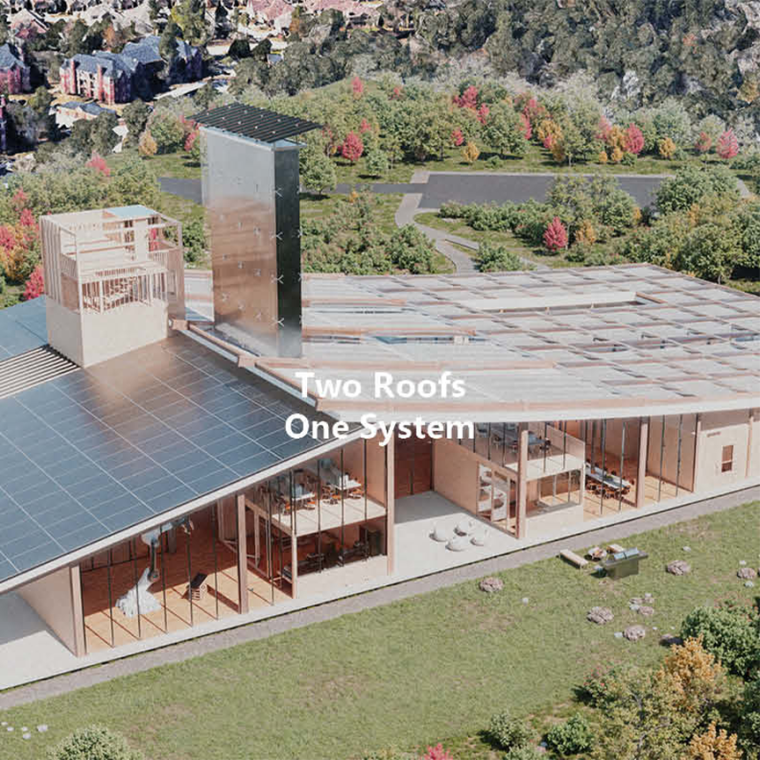Yudi Dong
How can form, material, and environmental systems come together to shape architecture in hot and humid climates?
Twin Canopy Research Center (1730 m²) is a two-story, mass timber complex dedicated to supporting climate study as well as providing lodging for researchers. Situated in Woodland, TX—a hot and humid climate—passive cooling is a critical component for ensuring thermal comfort and energy efficiency, particularly as cooling energy accounts for approximately 10% of global electricity consumption. The twin roofs, served as the primary sites for environmental heat exchange, are integral to the passive cooling strategy. They utilize their large surface areas for two critical processes: longwave radiation to sky for cooling and solar energy absorption to facilitate moisture evaporation. Specifically, Sky Radiative Cooling (SRC) Roof is paired with Radiant-Evapo Cooling (REC) Panel to address sensible heat loads; Desiccant-Based Dehumidification Roof is designed to manage indoor humidity. Traditionally, systems like SRC and REC are considered less effective in hot and humid climates. However, the Twin Canopy Center's design incorporates specific conditions to optimize their performance. Digital simulations, validated by physical testing, indicate that this design offers a viable prototype for passively cooling small office buildings in challenging climates.
Twin Canopy Research Center (1730 m²) is a two-story, mass timber complex dedicated to supporting climate study as well as providing lodging for researchers. Situated in Woodland, TX—a hot and humid climate—passive cooling is a critical component for ensuring thermal comfort and energy efficiency, particularly as cooling energy accounts for approximately 10% of global electricity consumption. The twin roofs, served as the primary sites for environmental heat exchange, are integral to the passive cooling strategy. They utilize their large surface areas for two critical processes: longwave radiation to sky for cooling and solar energy absorption to facilitate moisture evaporation. Specifically, Sky Radiative Cooling (SRC) Roof is paired with Radiant-Evapo Cooling (REC) Panel to address sensible heat loads; Desiccant-Based Dehumidification Roof is designed to manage indoor humidity. Traditionally, systems like SRC and REC are considered less effective in hot and humid climates. However, the Twin Canopy Center's design incorporates specific conditions to optimize their performance. Digital simulations, validated by physical testing, indicate that this design offers a viable prototype for passively cooling small office buildings in challenging climates.


